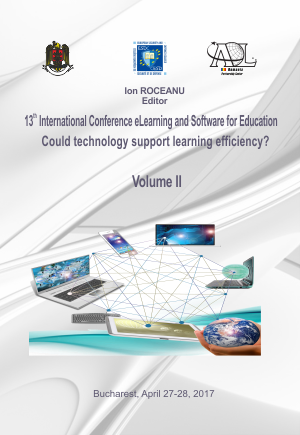CREATING A LEARNING SPACE FOR COLLABORATION, COMMUNICATION AND INTERACTION
CREATING A LEARNING SPACE FOR COLLABORATION, COMMUNICATION AND INTERACTION
Author(s): Robin Støckert, George Adrian StoicaSubject(s): Social Sciences
Published by: Carol I National Defence University Publishing House
Keywords: future learning space; BYOD; blended learning; communication and collaboration.
Summary/Abstract: To offer and adapt education to the first generation of digital natives, we need to examine, evaluate, and create new types of learning spaces. The modern student wants to learn at any time, in any format and in any space. We also need to prepare the student for the workplace of the future, where digital technology enables people and processes to connect and interact regardless of physical location , distance and time. Collaboration and communication are done on several types of devices and we have a mixture of social networks, work networks and learning environments. The Norwegian University of Science and Technology is developing a vast selection of learning spaces for blended learning. We will in this paper present an example of a learning space, which supports e-learning, audio/video conference, BYOD (bring your own device) and shared multi-touch surfaces for interaction and collaboration in group work. To facilitate all these features, we must take in account the physical surroundings but also the pedagogy and learning methods to be utilized in this learning space. In this paper, we will discuss the process of designing, utilizing, and evaluating the learning space. A lot of challenges appear in this process. Who are the stakeholders participating? What do they have in common? What is the main goal of the project? What type of pedagogy and methods should be used in the space? Who should use the space and how? How to train and motivate teachers and students to use the learning space? Do they use it as we expected in the design phase? How can we measure the impact or learning effect of this learning space? What kind of pitfalls will appear during the lifespan of a technological learning space? These questions and many more will be elaborated and discussed, to find a good way to combine space, technology, and pedagogy. Our findings will give us key guidelines for a successful design of a sustainable template for the future learning space.
Journal: Conference proceedings of »eLearning and Software for Education« (eLSE)
- Issue Year: 13/2017
- Issue No: 02
- Page Range: 189-196
- Page Count: 8
- Language: English

